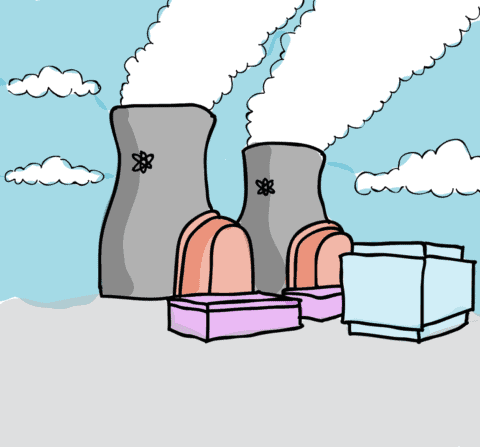The director of the Sylvia Fedoruk Canadian Centre for Nuclear Innovation at the University of Saskatchewan, Neil Alexander, was relinquished of his duties in October 2016. The circumstances surrounding his dismissal are unclear, but it is certainly a hard blow against nuclear power in this province.
Electricity is essential to the functioning and progress of our modern world. The debate of how to generate this electricity in a sustainable and responsible manner has never been more prevalent than today.
Currently, Saskatchewan sees its electricity come from a variety of sources — 40 per cent natural gas, 32 per cent coal, 20 per cent hydro and five per cent wind.  This means that 72 per cent of our electricity is generated through the burning of fossil fuels — a process that emits large amounts of carbon into the atmosphere each year. The question is, would nuclear power be a better solution?
This means that 72 per cent of our electricity is generated through the burning of fossil fuels — a process that emits large amounts of carbon into the atmosphere each year. The question is, would nuclear power be a better solution?
In May 2016, Tim Eckel, vice president of transmission at SaskPower announced that the implementation of small nuclear reactors are something that the crown corporation is considering for the future. With this announcement, the idea of nuclear power generation in Saskatchewan became something no longer solely confined to the realm of science fiction.
How does nuclear power generation work? The first step involves the extraction of uranium, an element which occurs naturally in the earth’s crust. In fact, trace amounts of uranium are found in our bodies and even the water we drink.
However, concentrations of uranium exist in certain parts of the world, such as the Athabasca Basin in northern Saskatchewan. Once the uranium is extracted, it is refined and ready for use in a nuclear power facility.
Once at a nuclear power plant, the refined uranium isotope is subject to fission — the splitting of atoms — in which heat is released as a by-product. This heat is used to evaporate water into steam which is then used to drive a turbine and, voila, generate electricity, much like fossil fuel power generation does.
The biggest difference here is that no greenhouse gases are emitted during fission. In fact, only a small amount of greenhouse gas emissions result from the entire life cycle of nuclear energy production — including the construction, operation and decommissioning of a facility.
Unfortunately, nuclear energy production is not without its flaws. The largest issue with the generation of electricity from nuclear fission is the use of uranium. The extraction and refining of uranium presents the first problem, in which environmental damage occurs as a result of these activities.
Secondly, there’s the issue of the management of uranium while it is in use. The highly publicized tragedy at Chernobyl, Ukraine in 1986 frequently comes to mind in the opposition of nuclear power. The cause of this accident was a result of an improperly trained nuclear workforce paired with a faulty nuclear reactor.
Lastly, there is the question of what to do with spent uranium fuel. While exhausted uranium fuel can be safely stored deep underground, it is highly radioactive for many years to come.
However, there are also benefits to the use of nuclear fission to generate electricity. As previously mentioned, perhaps the brightest side of going nuclear is that carbon emissions during a nuclear power plant’s life cycle are much less than fossil fuel power.
Nuclear energy is also more reliable than wind or solar power, in that these sources rely on constant sun exposure or sustained wind, which are often not present during hours of peak energy demand.
It is clear then that nuclear power is not the perfect solution, but as of now, no solution is perfect for power generation. Until humankind can perfect and reduce the cost of truly renewable energies, the positives of nuclear energy might well enough offset the negatives in providing a short-term solution to bridge the gap between fossil fuel power generation and the renewables of the future.
The Sheaf would like to state that this article in no way suggests that Neil Alexander’s departure was the result of something he did, and we apologize if it left anyone with that impression. Additionally, all opinions expressed in the opinions pieces of the Sheaf are that of the author alone.
—
Bodan Worobetz
Graphic: Lesia Karalash / Graphics Editor